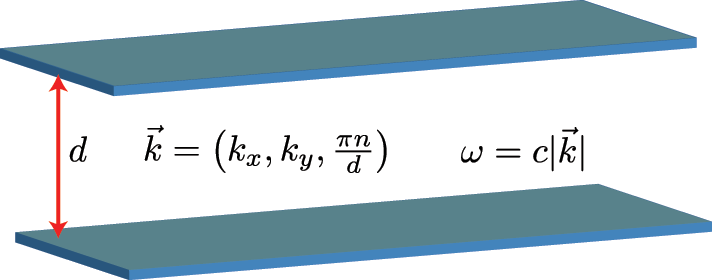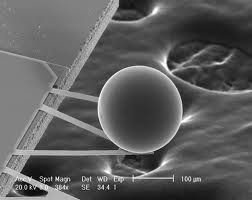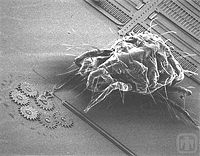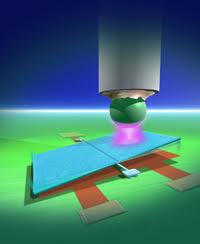Casimir Force in QED
Thoery
![]() "On
the attraction between two perfectly conducting plates,"
"On
the attraction between two perfectly conducting plates,"

Quantum fluctuations of electromagnetic field in the vacuum between leads to an attractive force between perfect mirrors

![]() "The
Theory of Molecular Attractive Forces Between Solids,"
"The
Theory of Molecular Attractive Forces Between Solids,"
E.M. Lifshitz, Soviet Physics 2, 73 (1956),
Generalizes the result by considering fluctuating current sources in the bodies.
Experiment
![]() Early experiments
provided at best qualitative support for an attractive force:
Early experiments
provided at best qualitative support for an attractive force:
Deriagin & Abrikosova (1956) [Silica lenses]; Sparnaay (1958) [Aluminum plates H~1-100 nm]
Israilachvili & Tabor (1972) [mica H>1µm]; von Blokland & Overbeek (1978) [H~1-100 nm]
![]() The era of
high precision tests:
The era of
high precision tests:
"Demonstration of the Casimir Force in the 0.6 to 6µm Range," (using a torsion pendulum)
S.K. Lamoreaux, Phys. Rev. Lett. 78, 5 (1997)

"Precision Measurements of the Casimir Force from 0.1 to 0.9µm," (using atomic force microscopy)
U. Mohideen and A. Roy, Phys. Rev. Lett. 81, 4549 (1998) (offline)
Other groups [Ederth; Bressi, Carugno, Onofrio & Ruoso; Decca, Lopez, Fischbach & Krause; ...]
Applications
![]() Important in microelectromechanical systems (MEMS): micron-scale metallic machines
Important in microelectromechanical systems (MEMS): micron-scale metallic machines

"The role of the casimir effect in the static deflection and stiction of membrane strips in MEMS,"
F. Michael Serry, Dirk Walliser, and G. Jordan Maclay, J. Appl. Phys. 84, 2501 (1998)
"Stiction, adhesion energy, and the Casimir effect in micromechanical systems,"
E. Buks and M. L. Roukes, Phys. Rev. B 63, 033402 (2001)
"Quantum Mechanical Actuation of Microelectromechanical Systems by the Casimir Force,"
H. B. Chan, V. A. Aksyuk, R. N. Kleiman, D. J. Bishop, Federico Capasso, Science 291, 1941 (2001)
